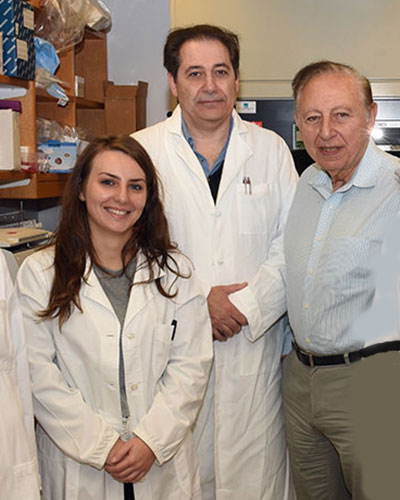May 09, 2022 | Annalisa Merelli

A bird flu is spreading again.
Several cases of very contagious avian influenza have been identified in the states of Washington, Oregon, Maryland, and Delaware, where over 3 million cases in chickens have been identified since February. At least 80 vultures, too, have died of the disease. Last week, the US Centers for Disease Control and Prevention (CDC) also reported a case of human avian influenza A(H5) in Colorado, the second associated with the current outbreak of avian flu among birds, which started in 2021.
Meanwhile, the first human (a Chinese boy in Henan province) tested positive for H3N8, a strand of avian flu so far known to only infect animals and birds.
Risks of bird-to-human transmission and outbreaks are still low, and while monitoring is warranted, there isn’t much reason for alarm at the moment. Panicking at appearance of avian flu isn’t justified, but the lingering concern that another pandemic might come, and before we are ready for it, isn’t misplaced, either. The chances we’ll see another large-scale epidemic or pandemic soon are high—and it’s likely that the threat will come from a pathogen we are already familiar with.
What will cause the next pandemic?
COVID "is unlikely to be the final pathogen that leads to a multi-country epidemic or a global pandemic,” write Nadia Sam-Agudu, a professor of pediatrics in the Institute of Human Virology at the University of Maryland School of Medicine who works in Nigeria, and Chandy John, a professor of Pediatric Infectious Disease at Indiana University’s School of Medicine in a paper published earlier this year in Molecular Therapy.
The possibility that new viruses (including novel coronaviruses) might threaten global health exists, but researchers have identified a number of existing pathogens that could well lead to widespread outbreaks.
The vast majority of these are viruses, in particular belonging to the hemorrhagic fever group (including Ebola, hantavirus, Lassa fever), flaviviruses (dengue, zika, yellow fever), and coronaviruses (MERS, and new strands of COVID).
Contact
Vanessa McMains
Director, Media & Public Affairs
Institute of Human Virology
vmcmains@ihv.umaryland.edu
443-875-6099
Related stories

Monday, October 17, 2022
Quartz: The Africa CDC Chief Had Trouble Getting into Germany for the World Health Summit
Attendees from poor countries often struggle to get visas to attend the conferences that discuss their future. The World Health Summit, a World Health Organization (WHO)-backed global health conference, is underway in Berlin, Germany. Ahmed Ogwell Ouma (who goes by Ahmed Ogwell), the acting director of Africa’s Centers for Disease Control and Prevention (Africa CDC), almost didn’t make it to Berlin. At Frankfurt airport, he noted on Twitter, he was “mistreated.. by immigration personnel who imagine I want to stay back illegally.”

Tuesday, July 19, 2022
Six-Country African Study Shows COVID-19 Can Be Dangerous in Pregnancy
A new study involving hospitalized women in six African countries from the University of Maryland School of Medicine’s (UMSOM) Institute of Human Virology (IHV) showed that pregnant women with SARS-CoV-2, the virus that causes COVID-19, had double the risk of being admitted to the intensive care unit (ICU) and four-times the risk of dying in-hospital than pregnant women who did not have COVID-19.

Tuesday, February 15, 2022
Multi-Country African Research Reports High Rates of COVID-19-Related Deaths Among Hospitalized Children and Adolescents
African children and adolescents hospitalized with COVID-19 experience much higher mortality rates than Europeans or North Americans of the same age, according to a recently published study conducted by researchers from the Institute of Human Virology (IHV) at the University of Maryland School of Medicine (UMSOM) and the Institute of Human Virology Nigeria (IHVN). Both organizations are members of the Global Virus Network (GVN).

Thursday, August 12, 2021
Institute of Human Virology Member Joins Scientific Advisory Committee of the Coalition for Epidemic Preparedness Innovations
The Coalition for Epidemic Preparedness Innovations (CEPI) announced that Alash'le Abimiku, PhD, Professor of Medicine of the Institute of Human Virology (IHV) at the University of Maryland School of Medicine, a Global Virus Network (GVN) Center of Excellence, will join their Scientific Advisory Committee for three-years.

Tuesday, July 20, 2021
Nature: Should children get COVID vaccines? What the science says
With vaccination campaigns underway in some countries while others weigh the options, Nature looks at the evidence for vaccinating younger people.

Friday, April 02, 2021
Baltimore Sun: Q&A with Dr. Robert Gallo: ‘The world has to be linked to fight a pandemic’
Robert Gallo, the eminent virologist best known as co-discoverer of the AIDS virus, says the world needs a system to confront viral disease that’s free of politics and primed to quickly warn nations about new threats as if “the bad Martians are coming.” The uneven and politicized response to the coronavirus pandemic, with a worldwide toll approaching 3 million, including 553,000 deaths in the United States, proves Gallo’s point.

Friday, August 21, 2020
Institute of Human Virology and Italian Researchers identify a SARS-CoV-2 Viral Strain with Deletion in a Protein, Possibly Reducing Fatalities
The Institute of Human Virology (IHV) at the University of Maryland School of Medicine, a Global Virus Network (GVN) Center of Excellence, in collaboration with scientists from Campus Biomedico in Rome, Italy announced today the results of studies showing the emergence of a SARS-CoV-2 viral strain with a deletion in a protein known as nsp1. These data, accepted for publication today by the Journal of Translational Medicine, (link here) may indicate the emergence of a less pathogenic viral strain.

